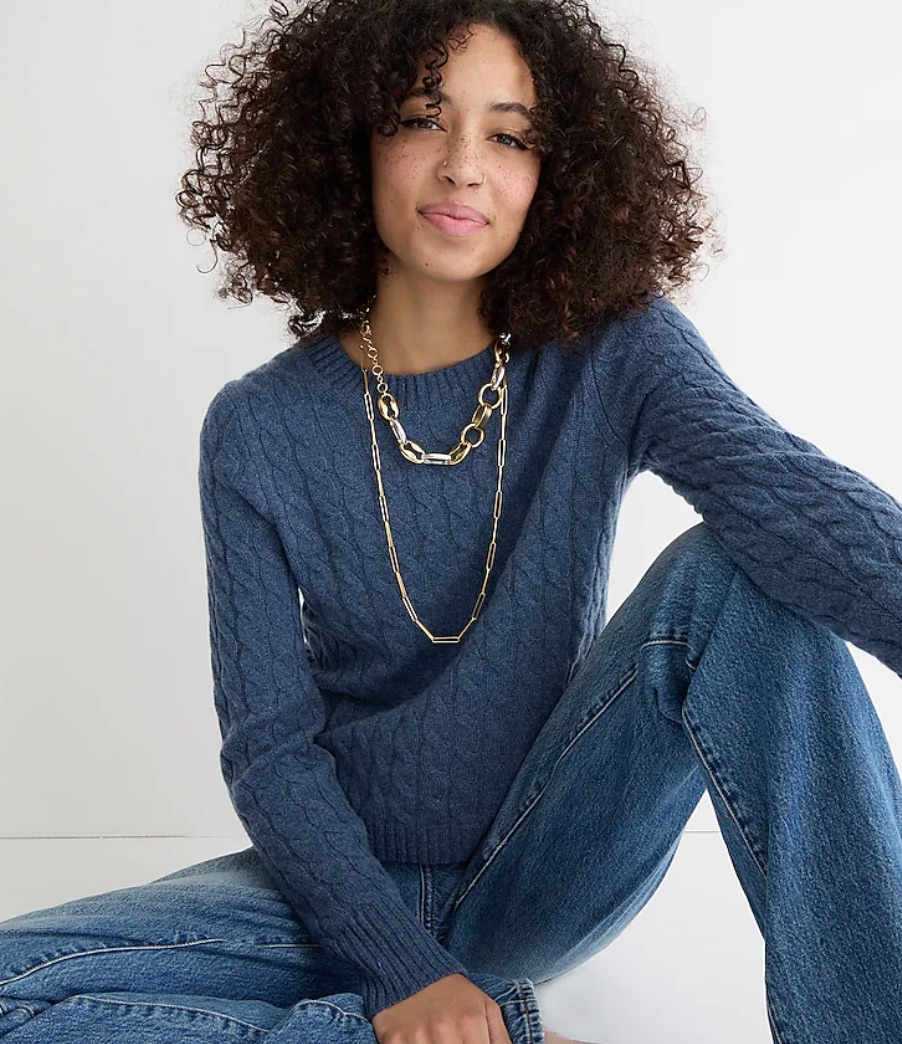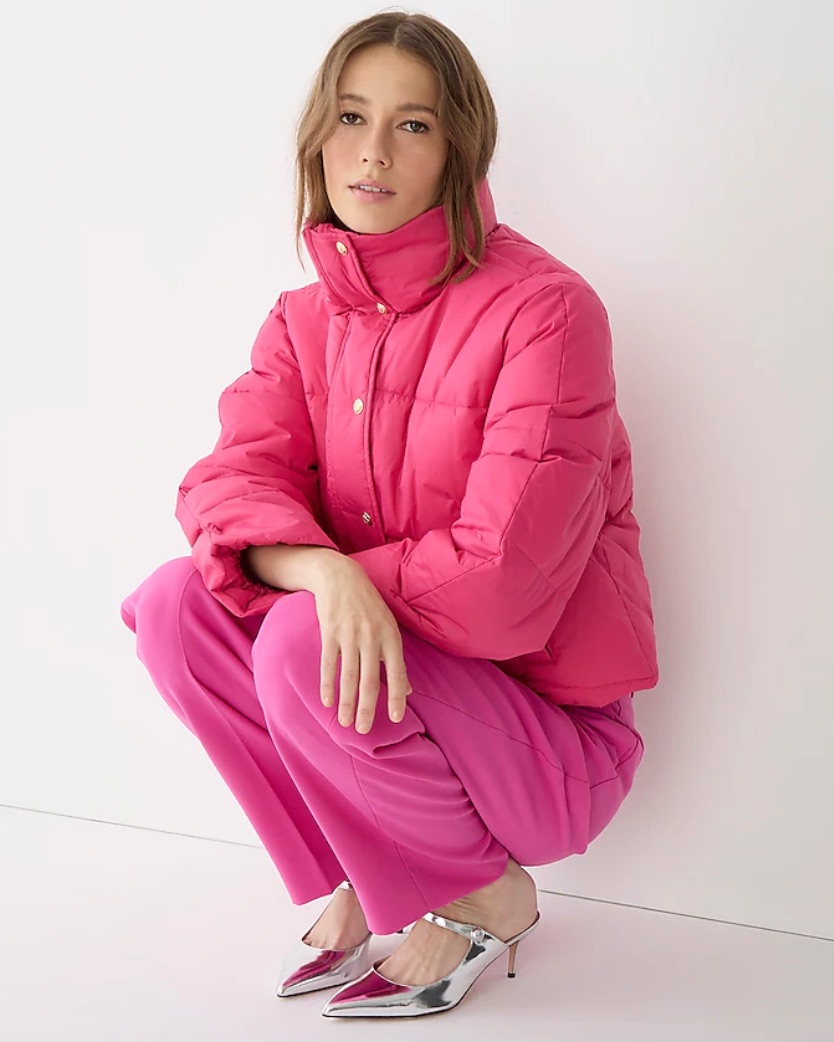J.Crew's Olympia Gayot on the Items That Have Achieved Cult Status
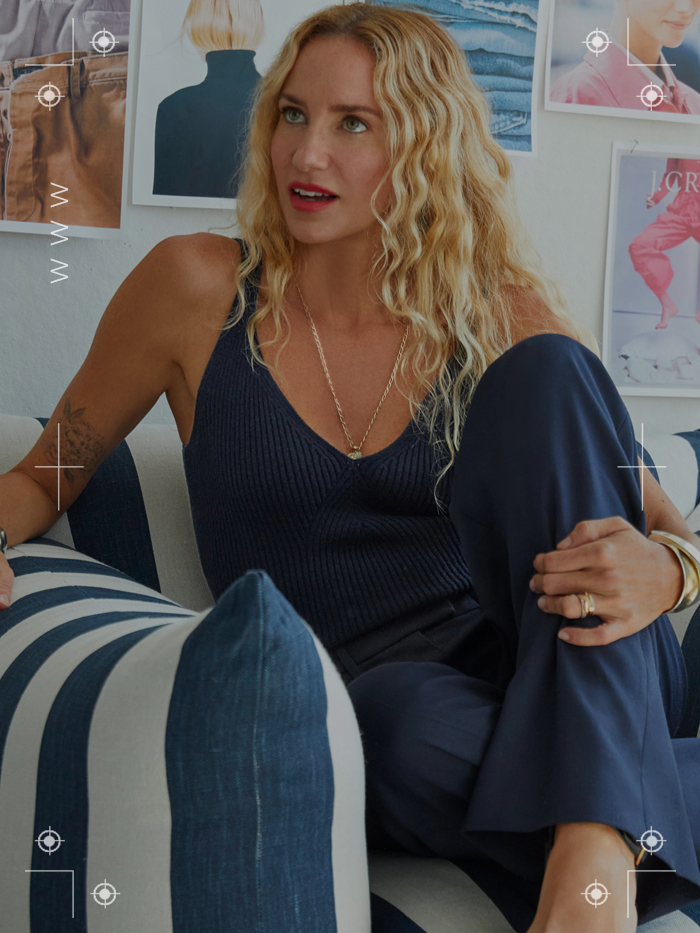
Welcome to our podcast, Who What Wear With Hillary Kerr. Think of it as your direct line to the designers, stylists, beauty experts, editors, and tastemakers who are shaping the fashion-and-beauty world. Subscribe to Who What Wear With Hillary Kerr on Apple Podcasts and Spotify.
Olympia Gayot, J.Crew's head of women's and kids design, knows a thing or two about color. Prior to joining J.Crew in 2010, Gayot attended the School of Visual Arts in New York City, where she studied fine art and painting. After graduating, Gayot painted commissions and simultaneously designed and styled for brands on the side.
Gayot brings her love of art and color composition into designing bold trousers, coats, and everything in between at J.Crew. "I'm always going to gallery openings or shows to keep myself interested in what's going on and aware of what's happening in the contemporary world," Gayot said.
Not only does Gayot bring her artistic eye to design, but she's also always thinking ahead when it comes to what's going to inspire the next season's collection. "I wish I could say it was one or two things that inspire me, but it's really just so many different things, " Gayot said. "It's about connecting those dots together and creating a story." In Wholesale Replica Bag episode of Who What Wear With Hillary Kerr, Gayot shares how she landed at J.Crew, the pieces that were her favorite to design, and more.
For excerpts from the interview, scroll below.
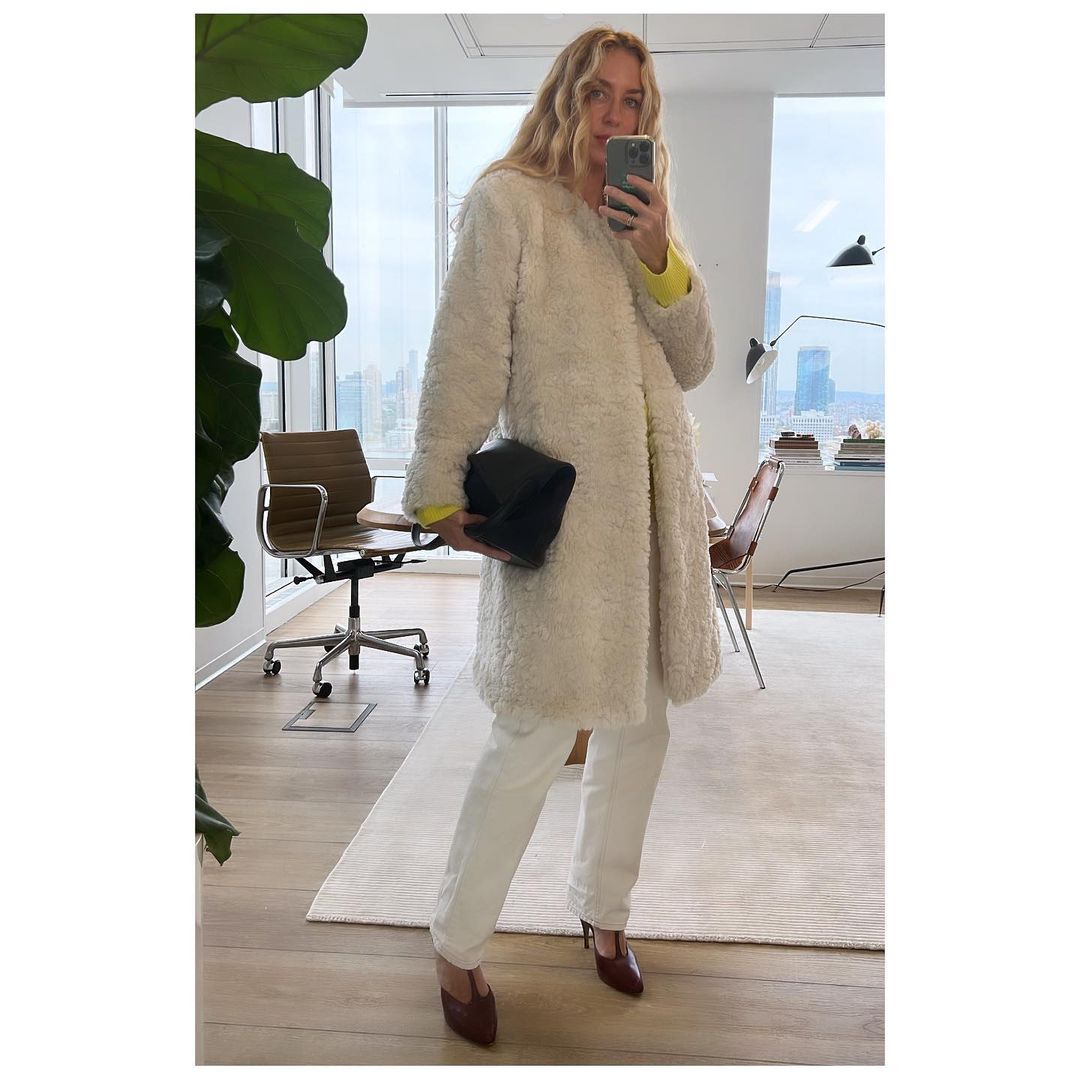
I want to talk about your use of color. We read that you were a painter in your former life, which made so many things click into place for me because you have the most artistic sensibility when it comes to color combinations. Can you tell me a little bit about that?
Growing up, I always loved to draw and paint. That was how I expressed myself. I would always draw. A lot of it was honestly girls and clothes and my grandparents and what they were wearing and my parents and what they were wearing to parties. I was always creating stories through that, and it led me to art school. I studied fine art and painting. It's just something that I've always been interested in. I was painting portraits for years before I started full-time in fashion. Color, specifically how it relates to design… There are so many amazing painters who have the greatest eye, and they really know how to put color together well in a very emotional and very bold way. I'm always going to gallery openings or shows to keep myself interested in what's going on and aware of what's happening in the contemporary world.
I'm curious about how you think about inspiration on a season-to-season basis, on a day-to-day basis. How do you think about [it] when you're sitting down to think of something? And I'm sure you design quite far in advance. How do you think about, "Okay, if this is inspiring me now, how am I gonna feel about it in six months? Nine months? A year?"
That's definitely the challenge. As a designer, you get used to it after 20 years. It's normal that we work a year ahead. I wish I could say it was one or two things that inspire me, but it's really just so many different things. It's about connecting those dots together and creating a story. At J.Crew, the place that it starts is thinking about the heritage, the brand heritage, the DNA of the brand, the lifestyle of the woman or the man or the family who wears J.Crew, all of the cultural references of the brand. So much of it is fabric based or shape based—thinking about things like the bucket hat or the chino or the cashmere sweater or the roll-neck sweater. There are so many things that are in the brand's DNA. That's really the beginning of it because it is such a rich heritage. For me, honoring that heritage is a gift.
Can you tell me any other pieces where they might have felt really personal to you or they felt rooted in the DNA of the brand and the audience has really loved it?
I think the suit is one for sure—the fabric of chino or even the fabric of chino in a suit. When I first started back again in the pandemic, we thought we could all go back into the real world, and I was like, "Okay, we need a suit again." I think the first suit we did had an elastic back, because we're like, "We're not sure how comfortable you're gonna want to be. Let's make it look cool. The front of the back will be elastic." I've always loved suits. I've always loved tailored menswear-inspired pieces. It's very hard to find a really high-quality suit for a good price. It's just tricky to find something that you feel proud to buy [and] proud to wear that you know you can have in your closet for a long time. … When I first started working at J.Crew when I was a baby, it was one of the first things I bought. Those pieces of clothing, like my blazers and trousers, I still have them from way back when. When I came back, there weren't that many suits in the line—I don't think there were any—and I was like, "We got to do this again." It's just something that I think women are ready for.
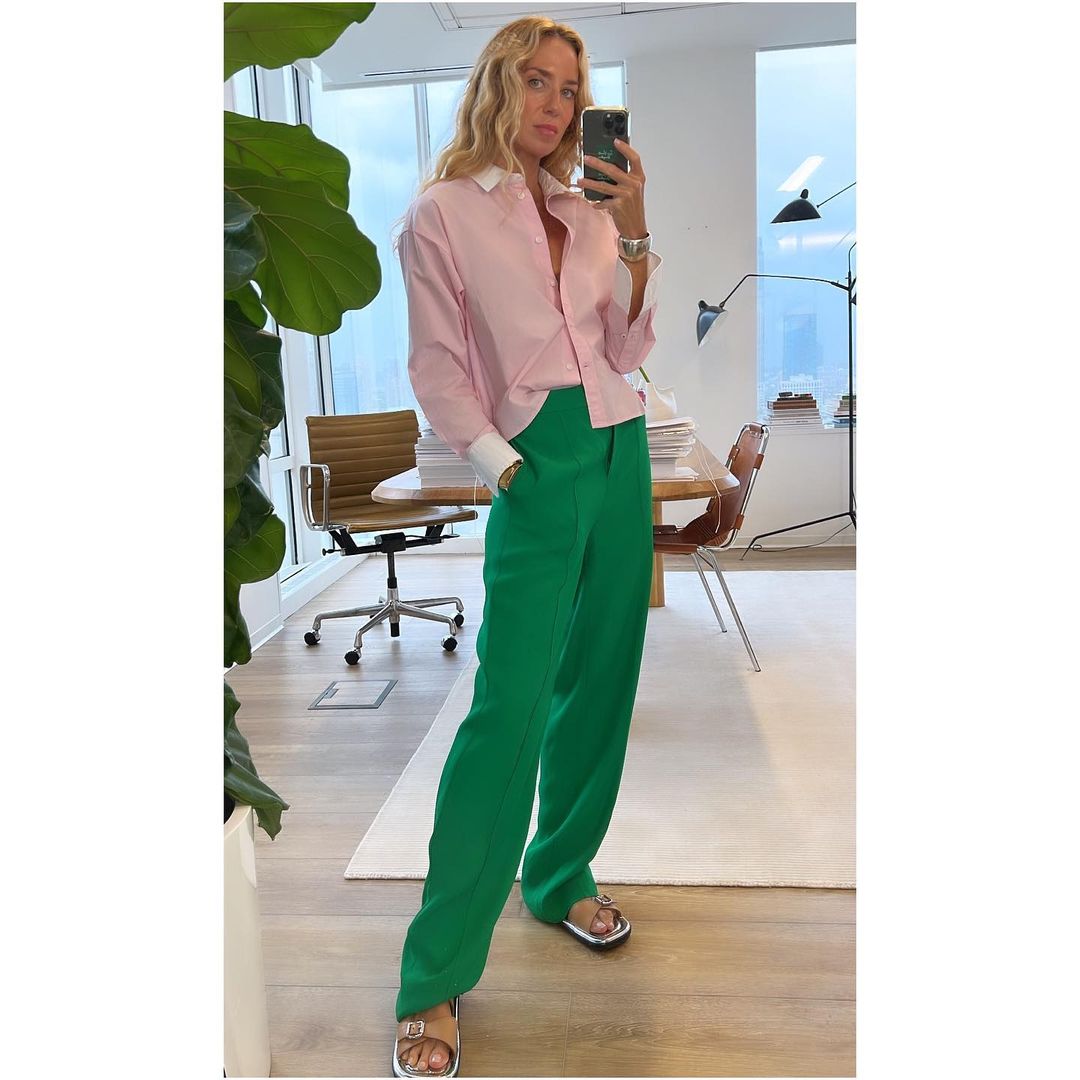
This interview has been edited and condensed for clarity. Next up, check out our previous episode featuring Kat Collings.
